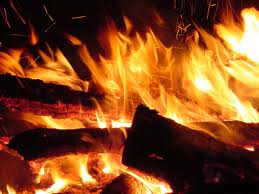Most roofing materials are fire-rated by standards writing organizations. You may have noticed a UL on the roofing material for Underwriters Laboratory, National Fire Protection Association (NFPA) or the American Society for Testing Materials (ASTM).
Class
Class “A”, being the most fire resistant, is able to withstand severe exposure to fire originating outside the building. Class “B”, is able to withstand moderate exposure to fire originating outside the building. Class “C”, is able to withstand light exposure to fire originating outside the building. And unrated, which is the most vulnerable roof.
To determine the fire ratings, roofing material is set on fire in a laboratory. A burning piece of wood is set on top of the testing material and then set on top of a roof structure mock up.
Fire Rating
- Class A roof coverings include composition shingles, clay tiles, slate, concrete, steel or copper roofs. Ceramic and concrete roofs are heavy and weaken building structures creating a higher risk for collapse.
- Aluminum roofs can have a Class A if installed with a fire resistant underlying material.
- A fire retardant treated shake roof has a Class B rating, but can qualify as Class A if a fire resistant material is used underneath the shakes. If you cannot find the fire rated documentation from the manufacturer, assume your wood shake is unrated.
- Recycled rubber and plastic roofing shingles and shakes usually have a fire rating of Class C. Manufacturers can increase the fire rating if a fire resistant underlayment is used.
- Green roofs, there are no current fire ratings for these plant covered roofs. Naturally fire retardant sedums and succulents do not pose a risk to spreading the fire. If you use natural grasses on your roof, you can assume they are the same risk as grasses in your yard. If the plants are dry, they will burn and potentially spread the flames.
- Thatch roofs have been used for literally thousands of years. Fire danger is reduced by using aluminum barrier foil, fire retardant spray and non-combustible underlayment.
Check the Packaging
Check the fire rating class on the packaging of the roofing materials you are purchasing. Ask if there are ways to increase the fire rating, such as special underlayments or fire retardant sprays. Also check with your homeowners insurance and make sure the roofing material you are considering will be covered under your current policy.







